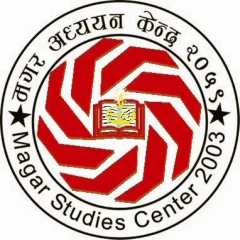Fisher, James F. (1997). Trans-Himalayan Traders: Economy, Society, and Culture in Northwest Nepal. Delhi: Motilal Banarsidas Publishers, Pvt. Ltd. (First Indian Edition: Delhi, 1987). Annotation by: Dr. Govind Prasad Thapa
The book is “based on the field research conducted in a village deep in the mountains of northwest Nepal.” This work is, in other words, the socio-anthropological study of Kaike Magar people of Tarangpur (imaginary Name) village of Dolpo district of northwest Nepal. About the village Tarangpur the writer gives a picturesque view: “The Magars of Tarangpur and surrounding villages are not tribal in the corporate, territorial, or political sense usually implied by that term; nor, given their concentration in a limited part of Nepal and the lack of traditional relations with Brahmins and other high-caste Hindus, are the a caste in the conventional Indian sense. If a sociological label is required, “peasant,” in Redfield’s (1993), use of that term, or “ethnic group” (Marriott 1965) is as appropriate as any, but I am skeptical about the utility of several kinds of anthropological labels for a people who are marginal in so many ways. In these mountain communities, Magar is simply a convenient status summation which can be readily and incontestable claimed by anyone (except untouchables) who wants it. I call inhabitants of Tarangpur Magars as a shorthand device to place them in ethnographic context, not to describe a specific structural or cultural type.” (p. 2-3) About the origin of these Magars, the writer found that “The people of Tarangpur believe that they are the children of angels. The people of Tarangpur have quite clear notions of whence, how, and why, (but not when) they came to Tichurong, but at the level of concrete detail, at least, local origin myths and what is historically known do not, by and large, overlap.”
Gautam, Rajesh and Asoke K. Thapa Magar (1994). Tribal Ethnography of Nepal 2. Delhi: Book Faith India. Annotation by: Pratigya Regmi
Gautam and Magar (1994) is a description of various languages including Magar. For Magars, it has mainly focused on their origin, clans (Thar), language, physical characteristics, family, life cycle rites like birth, Pasni, Chhewar (ritual hair ceremony), marriage practices, death rites, religion and festivals, occupation, social status, dress, ornaments and social organization of the people. It helps to draw the socio-cultural information about Magar.
Gelner, David N. Hlusner, Sondra L & Letizia, Chaira (Eds) (2016). Religion, Secularism and Ethnicity in Contemporary Nepal. Publisher: Oxford University Press Annotation by: Gupta Bahadur Rana
The authors discuss on the religion, secularism and ethnicity in the Hindu Kingdom of Nepal and Maoist movement and influence to secularism and ethnicity. In the book Pustak Ghimire’ article “Living Goddess Everywhere? On the possession of women by the Goddess Bhagawati in some mountain villages in Eastern Nepal” relates the facts where live Goddess Bhagawati ritual of Khotang district is mentioned and Magar also participate actively in that religious worship ritual. The writers argues that janajati groups like Magar, Gurung, Tamang, Newar, Rias and parbatiyas followed Hinduism and rooted in their culture and ancestral worships.
Gregson, Jonathan (2002). Massacre at the Palace: The Doomed Royal Dynasty of Nepal. New York: Hyperson (77 West Street). Annotation by: Gupta Bahadur Rana
Jonathan (2002) has described the royal massacre at the palace of Nepal. About Magars he stated that, “Their immediate neighbors to the south and west, the Magars, are equally renowned for their martial prowess. Of the thirteen members of the Brigade of Gorkhas to be decorated with Britain’s highest award for gallantry, the Victoria Cross, six were Magars, and long before they were recruited by the British, Magars had formed the backbone of local rulers’ armies. Living mostly from farming at lower altitudes, they had greater contact with Hindus who had come up from the plains, and adopted many of their practices.” (p. 24)
